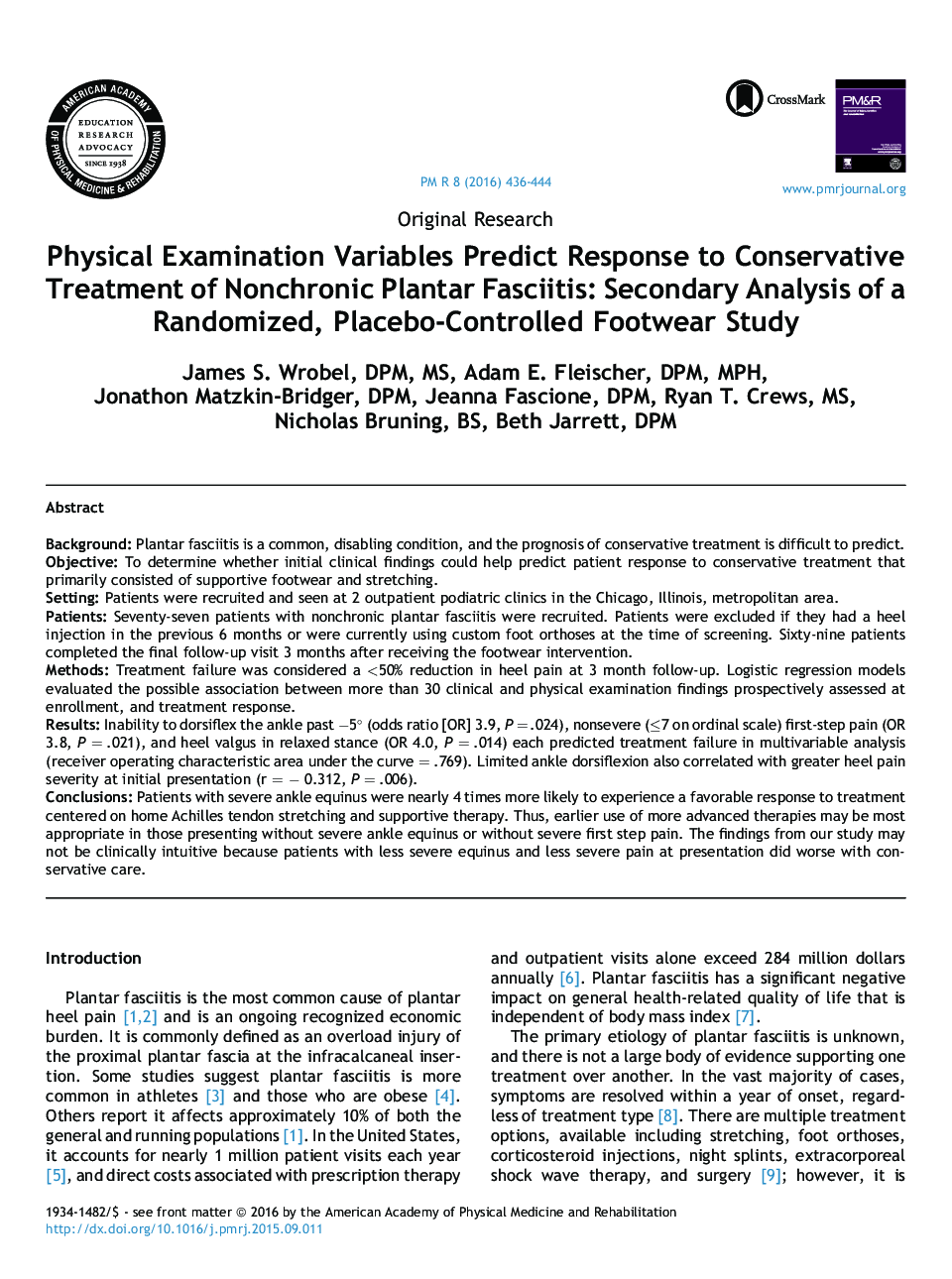| کد مقاله | کد نشریه | سال انتشار | مقاله انگلیسی | نسخه تمام متن |
|---|---|---|---|---|
| 2711927 | 1145062 | 2016 | 9 صفحه PDF | دانلود رایگان |
BackgroundPlantar fasciitis is a common, disabling condition, and the prognosis of conservative treatment is difficult to predict.ObjectiveTo determine whether initial clinical findings could help predict patient response to conservative treatment that primarily consisted of supportive footwear and stretching.SettingPatients were recruited and seen at 2 outpatient podiatric clinics in the Chicago, Illinois, metropolitan area.PatientsSeventy-seven patients with nonchronic plantar fasciitis were recruited. Patients were excluded if they had a heel injection in the previous 6 months or were currently using custom foot orthoses at the time of screening. Sixty-nine patients completed the final follow-up visit 3 months after receiving the footwear intervention.MethodsTreatment failure was considered a <50% reduction in heel pain at 3 month follow-up. Logistic regression models evaluated the possible association between more than 30 clinical and physical examination findings prospectively assessed at enrollment, and treatment response.ResultsInability to dorsiflex the ankle past −5° (odds ratio [OR] 3.9, P = .024), nonsevere (≤7 on ordinal scale) first-step pain (OR 3.8, P = .021), and heel valgus in relaxed stance (OR 4.0, P = .014) each predicted treatment failure in multivariable analysis (receiver operating characteristic area under the curve = .769). Limited ankle dorsiflexion also correlated with greater heel pain severity at initial presentation (r = − 0.312, P = .006).ConclusionsPatients with severe ankle equinus were nearly 4 times more likely to experience a favorable response to treatment centered on home Achilles tendon stretching and supportive therapy. Thus, earlier use of more advanced therapies may be most appropriate in those presenting without severe ankle equinus or without severe first step pain. The findings from our study may not be clinically intuitive because patients with less severe equinus and less severe pain at presentation did worse with conservative care.
Journal: PM&R - Volume 8, Issue 5, May 2016, Pages 436–444
